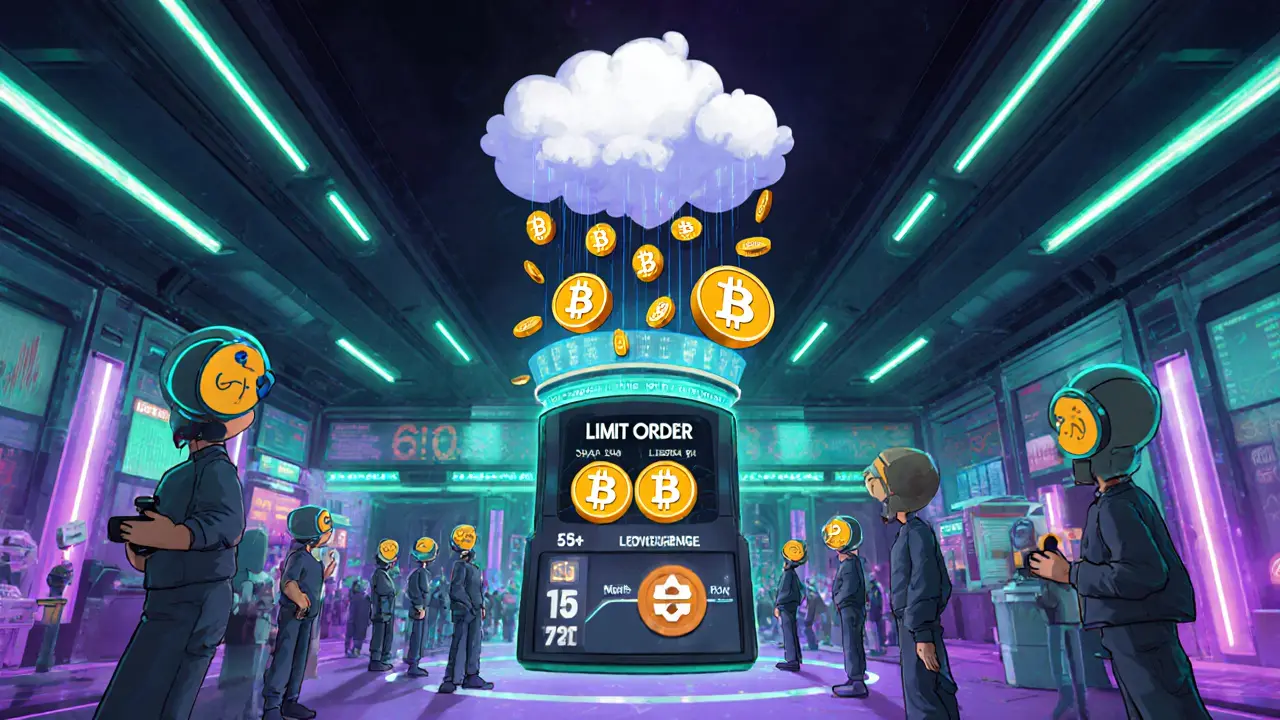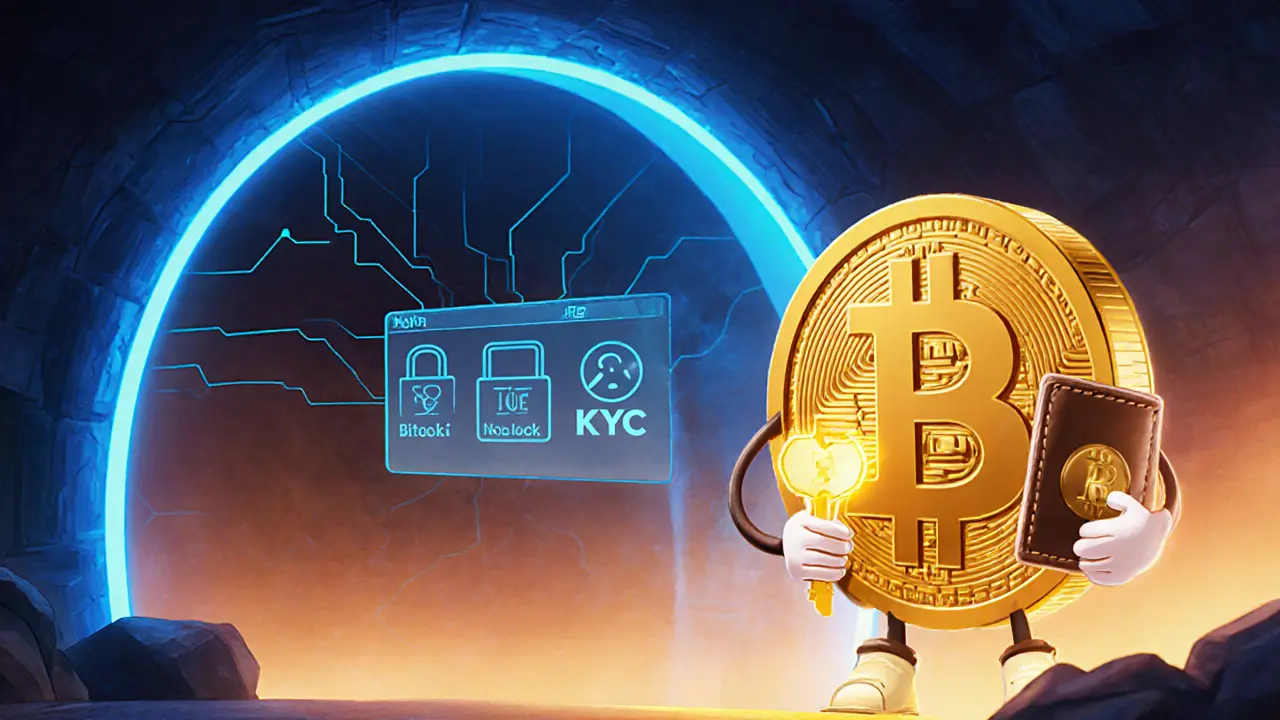Sovryn Margin Trading Calculator
Results
Enter your values above to see margin trading results
This Sovryn review aims to give you the full picture of the Bitcoin‑native DeFi exchange that’s been gaining attention since its 2021 launch. We’ll walk through how it works, the core features, token economics, security posture, user experience, and where it stacks up against the competition.
What is Sovryn?
Sovryn is a non‑custodial DeFi platform built on the RSK sidechain that brings smart‑contract capability to Bitcoin. The platform lets you trade, lend, borrow, and swap crypto while keeping your private keys on your own wallet. No KYC, no centralized custody - you stay in full control of your assets.
Founded in 2021, Sovryn markets itself as the first Bitcoin‑centric margin‑trading exchange, positioning itself against both centralized venues like Binance and Ethereum‑centric DEXs such as Uniswap.
How Sovryn Works: Bitcoin + RSK
Bitcoin provides the security base, while the RSK sidechain adds the ability to run smart contracts. When you connect a Bitcoin‑compatible wallet (e.g., Nifty Wallet, Liquality), the wallet talks to RSK, and every trade, loan, or swap is recorded on the Bitcoin blockchain via RSK’s merge‑mining process. This architecture means you benefit from Bitcoin’s proof‑of‑work security while still enjoying near‑instant DeFi interactions.
Transactions require RSK gas, which behaves like Ethereum gas but is paid in RBTC. Gas fees fluctuate with network load, and most users report the cheapest periods between 01:00‑08:00 UTC on weekdays.
Key Features
- Margin Trading: Up to 5× leverage on BTC and other supported assets without giving up custody.
- Limit Orders: Introduced in May 2022, allowing automated execution at target prices.
- Sovryn Zero: A trust‑minimized borrowing protocol launched in 2022 that lets users collateralize BTC to borrow stablecoins or other crypto.
- Non‑custodial Swaps: Peer‑to‑peer token swaps executed on‑chain, eliminating reliance on order books.
- Insurance Fund: 10 % of interest earned is funneled into a fund that backs under‑collateralized loans.
SOV Token and Economics
The native SOV token is an ERC‑20 asset that powers governance, fee discounts, and liquidity incentives on the platform. As of August 2025, SOV trades around $0.099 with a circulating supply of 18.27 million out of 100 million total. Holders can vote on protocol upgrades, and the token is also used as collateral in certain loan products.
Liquidity for SOV is fragmented; the highest 24‑hour volume comes from Gate.io (~$20,775). Low trading depth means slippage can be noticeable on larger orders.

Liquidity, Trading Volume, and Market Position
According to FxVerify’s traffic snapshot, Sovryn sees roughly 3,200 monthly visits with a 50 % bounce rate. Trading volume on the platform itself sits at about $55 k per day, a modest figure compared with centralized exchanges that routinely process billions. Rankings place Sovryn at 407 out of 586 crypto exchanges by organic traffic, highlighting its niche status.
For users who need deep liquidity, especially for large margin positions, the platform may feel thin. However, for Bitcoin‑centric traders who value self‑custody, the trade‑off can be worthwhile.
Security and Audits
Sovryn benefits from Bitcoin’s robust security model and undergoes regular third‑party audits. Multiple auditors have reviewed the RSK contracts, and the platform runs a bug bounty program that has paid out several thousand dollars for critical findings. The insurance fund mentioned earlier adds a safety net for borrowers, though it does not replace personal risk management.
Regulatory status remains unclear. FxVerify notes that Sovryn is not regulated by any government authority, which could pose compliance challenges for users in jurisdictions that require licensed exchanges.
User Experience & Support
Getting started involves three steps: (1) install an RSK‑compatible wallet, (2) fund it with BTC or RBTC, and (3) connect the wallet on live.sovryn.app. The UI is clean but can feel daunting for newcomers who are unfamiliar with Bitcoin‑sidechain concepts.
Support channels are limited to a Telegram group of ~4,200 members and a sparse help center. Users often cite long wait times and a lack of live chat as pain points. Community‑driven GitHub repos provide technical fixes, but the learning curve remains moderate.

Pros & Cons
- Pros
- Full custody of private keys - no KYC, no centralized freeze.
- Leverage trading built directly on Bitcoin’s security.
- Insurance fund helps mitigate loan defaults.
- Open‑source code encourages transparency.
- Cons
- Low liquidity and high slippage on many pairs.
- Limited token selection compared to Ethereum DEXs.
- RSK gas fees can spike during congestion.
- Support infrastructure is minimal.
- Unregulated status may restrict access in some countries.
Comparison with Other Exchanges
| Platform | Custody Model | Main Chain | Native Token | Typical Liquidity (24h) | KYC Required |
|---|---|---|---|---|---|
| Sovryn | Non‑custodial | RSK (Bitcoin sidechain) | SOV | ~$55 k | No |
| Binance | Custodial | Multiple (incl. Binance Smart Chain) | BNB | ~$45 bn | Yes |
| Uniswap | Non‑custodial | Ethereum | UNI | ~$6 bn | No |
| Teller.org | Non‑custodial | Ethereum & Bitcoin bridges | TLR | ~$1 m | No |
The table shows Sovryn’s niche positioning: it offers Bitcoin‑native leverage at the cost of lower liquidity and fewer tokens.
Future Roadmap
According to the 2025 Year‑02 Review, Sovryn plans to broaden Zero’s front‑end, launch a trust‑minimized stablecoin, and improve oracle security. Integration of a stablecoin could attract users looking for low‑volatility borrowing options and might boost overall liquidity.
Messari’s 2026 thesis predicts Bitcoin‑based DeFi could grow to 5 % of total DeFi by 2027 if platforms address the liquidity gap. Sovryn’s open‑source ethos and roadmap suggest it could capture a larger slice, but execution will be key.
Final Verdict
If you hold Bitcoin and want to trade with leverage without handing over your keys, Sovryn delivers a unique proposition. Its security model, insurance fund, and non‑custodial design are strong points. However, the platform’s thin order books, occasional gas‑fee spikes, and limited support make it less suitable for large‑scale traders or beginners unfamiliar with sidechain mechanics.
Overall, Sovryn is best suited for Bitcoin enthusiasts who prioritize self‑custody and are comfortable navigating a modestly technical UI. For those chasing deep liquidity or a broad token menu, a centralized exchange or an Ethereum DEX will likely feel more comfortable.
Is Sovryn regulated?
No. As of 2025 Sovryn does not hold a license from any financial regulator, which means users in regulated jurisdictions should evaluate local compliance requirements before using the platform.
What wallets can I use with Sovryn?
Any wallet that supports the RSK sidechain works - popular choices include Nifty Wallet, Liquality, and Metamask with the RSK network added.
How does margin trading on Sovryn differ from Binance?
Sovryn offers non‑custodial leverage directly on Bitcoin, meaning you never deposit your coins with a third party. Binance, by contrast, holds your collateral in a custodial account and requires KYC.
What is the SOV token used for?
SOV powers governance votes, provides fee discounts, and can be staked to earn a share of protocol revenue. It also serves as collateral in some loan products.
Can I trade on Sovryn without paying any gas fees?
No. All on‑chain actions require RSK gas, which is paid in RBTC. Fees fluctuate based on network load, but the platform’s gas‑optimisation tools help keep costs reasonable.




13 Comments
PRIYA KUMARI
Sovryn's liquidity is abysmal-every trade bites you with massive slippage, and the RSK gas fees turn any small position into a cash‑drain nightmare.
Jessica Pence
Here’s a quick start guide for Sovryn: 1. Grab a RSK‑compatible wallet like Nifty or Liquality (make sure you spelli it right). 2. Load it up with BTC or RBTC-don’t forget you need RBTC for gas. 3. Connect the wallet on live.sovryn.app and you’re ready to trade. If you hit any snags, double‑check your network settings and restart the app.
Anna Kammerer
Nice walkthrough, but good luck getting a real‑time reply from their Telegram-support seems to vanish faster than the gas price spikes.
Mike Cristobal
Trading without KYC is a reckless gamble on privacy that fuels illegal activity, and it makes you complicit in a system that ignores basic accountability 😊.
Patrick Day
What they don’t tell you is that the RSK sidechain is a backdoor for the deep‑state to monitor every Bitcoin move, feeding data straight to the shadow banks.
Paul Barnes
Even if they’re watching, you still hold the private keys.
Jenna Em
Freedom of finance feels like a lone lighthouse; you can see the shore, but the storm of fees still tries to drown you.
Scott McCalman
I was on Sovryn before it was a thing, scooping SOV at a penny and watching the hype explode 🚀-now everyone pretends it’s a brand‑new miracle.
Mike GLENN
When you weigh Sovryn’s offering, the first thing that stands out is the non‑custodial nature, which aligns perfectly with the core Bitcoin philosophy of self‑sovereignty.
The ability to margin trade BTC directly on a Bitcoin‑backed sidechain guarantees a security model that most Ethereum‑based platforms can only dream of.
However, the trade‑off comes in the form of thin order books; even modest positions can suffer from noticeable slippage, especially during volatile periods.
Gas fees on RSK, paid in RBTC, fluctuate like any other network, and while they are generally lower than Ethereum, they still spike enough to eat into small‑scale profits.
The insurance fund is a thoughtful addition, providing a modest safety net for under‑collateralized loans, but it should not be seen as a guarantee against total loss.
User experience is a mixed bag: the UI is clean but assumes a baseline understanding of sidechain mechanics, which can be a steep learning curve for newcomers.
Support channels are limited to a Telegram group and a sparse knowledge base, resulting in long response times that frustrate users seeking immediate help.
On the upside, Sovryn’s open‑source code fosters transparency, and the governance token SOV gives holders a voice in protocol upgrades, which is a rarity among centralized exchanges.
Liquidity remains the Achilles’ heel, with daily volumes hovering around $55k, making it unsuitable for large‑scale traders who need deep markets.
Future roadmap items like a trust‑minimized stablecoin and improved oracle security could attract a broader user base and alleviate some of the liquidity concerns.
Comparatively, while Binance offers massive depth and Uniswap provides a vast token selection, Sovryn’s niche appeal lies in its Bitcoin‑centric design and custody‑free environment.
If you prioritize holding your private keys and are comfortable navigating a slightly technical interface, Sovryn can be a valuable tool in your DeFi arsenal.
Conversely, if you chase high volume, low slippage, and robust customer support, you’ll likely feel more at home on a centralized platform.
Overall, the platform shines for Bitcoin enthusiasts who value security over convenience, but it still has significant growing pains to address.
In the end, it’s a trade‑off worth considering based on what you value more: absolute control or seamless trading experience.
John Lee
I hear you, and I’d add that the colorful community memes and the occasional airdrop surprise keep the vibe lively even when the liquidity drags.
Jireh Edemeka
Regulation is a myth, enjoy the freedom.
Lindsey Bird
Sovryn sounds like a futuristic hype train, but it’s basically a slow‑moving caboose that leaves you waiting for any real action.
john price
If you ask yourself what DeFi really means, you’ll see it’s just another buzzword for people trying to reinvint money without understanding the math, and that’s a recipe for disaster 🔥.